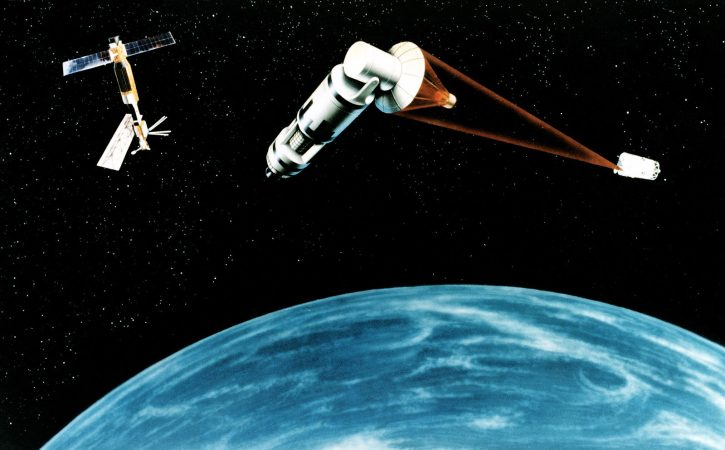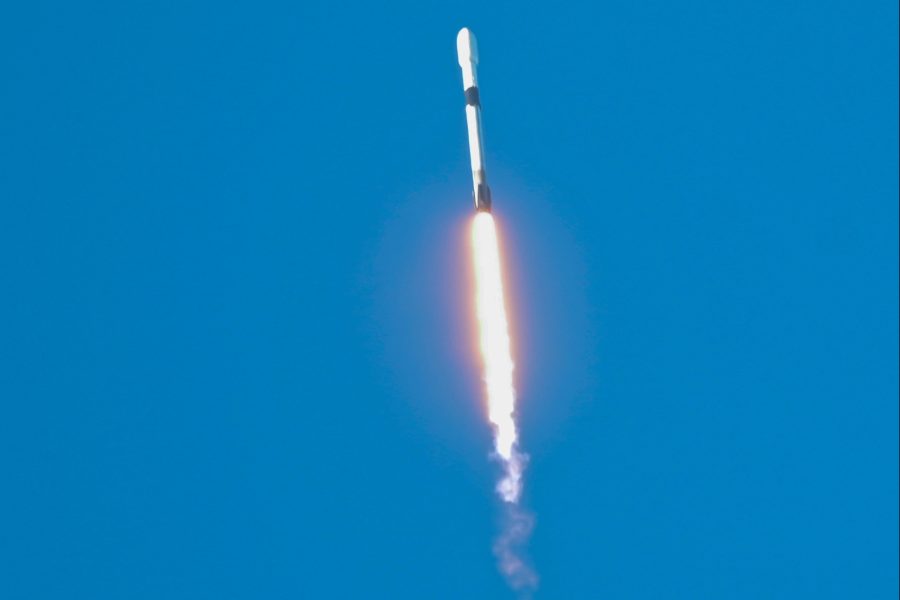Lawmakers in Congress are working to inject tens of billions of dollars into President Donald Trump’s ambitious “Golden Dome” plan for comprehensive missile defense of the U.S. homeland in the coming months.
On April 29, the House Armed Services Committee passed a new $150 billion reconciliation package that includes $24.7 billion for Golden Dome in fiscal 2025. The package still faces many hurdles before it is approved, but at the same time, the Pentagon will soon release its 2026 budget request. Lawmakers have already started work on funding Golden Dome for that fiscal year—in February, Sens. Dan Sullivan (R-Alaska) and Kevin Cramer (R-N.D.) proposed a bill earmarking nearly $18.5 billion in ’26 funds for the idea, then called Iron Dome for America.
While Sullivan and Cramer’s bill focused mostly on upgrading and expanding existing missile defense systems, the reconciliation package’s biggest adds for Golden Dome focus on developing a novel defense architecture in orbit and accelerating efforts to position additional satellites for sensing and tracking missile threats.
The package includes $5.6 billion specifically for the “development of space-based and boost-phase intercept capabilities,” a concept pursued over decades that Lt. Gen. Shawn W. Bratton, the Space Force’s top officer for strategy, plans, programs, and requirements, has called “no joke of a physical problem.”
Retired Space Force Col. Charles Galbreath, senior resident fellow at AFA’s Mitchell Institute for Aerospace Studies, explained that “from initial detection through relay, tracking, and targeting—all of that takes time, creating a very narrow window for either ballistic or hypersonic systems. If the Pentagon opts for a kinetic interceptor, it must also account for the object’s time of flight from space to the target.”
Given the substantial $5.6 billion allocation, the Department of Defense will likely at least invest in researching and demonstrating kinetic solutions, Galbreath said.
A more feasible option, however, might be non-kinetic interceptors such as directed energy weapons. The reconciliation package includes a separate $2.4 billion for non-kinetic missile defense programs.
“Directed energy reduces travel time, which gives you a bit more margin,” Galbreath said—an important advantage when the boost-phase window lasts only a few minutes. “That’s why in the 1980s and into the 1990s, there was strong interest in space-based lasers for boost-phase intercept; it was a logical path to pursue given the constraints.”

Under President Ronald Reagan, the Strategic Defense Initiative spurred extensive research into advanced missile defense, including experiments with lasers, particle beams, and gamma rays to disable threats in their early flight phase.
The largest allocation in the new Golden Dome package is $7.2 billion for military space-based sensors—funding that could boost efforts already underway, led by the Space Development Agency through its Proliferated Warfighting Space Architecture program. This initiative aims to populate low-Earth orbit with cost-effective satellites for tracking missiles and relaying data.
The package also includes $2.2 billion to expedite the development of hypersonic defense systems, with Galbreath suggesting that much of this funding will likely bolster the command-and-control capabilities of these systems.
Another $2 billion is allocated for air-moving target indicator (AMTI) military satellites. The Space Force announced last year that it plans to begin deploying satellites capable of tracking airborne threats by the early 2030s.
Additionally, $1.9 billion is included to enhancing ground-based radar systems, including the SBX Radar managed by the Missile Defense Agency and the Patriot Radar used in the Army’s missile defense operations. The funding will help improve their range, sensitivity, processing power, and overall reliability.
Golden Dome is still in its infancy, however; the Pentagon is still assessing which existing capabilities to enhance and which new technologies to develop. The added funding is expected to provide with a much-needed boost for the project, enabling industry to begin demonstrating and testing new technologies.
In a statement touting the Trump administration’s accomplishments after 100 days in office, Assistant to the Secretary of Defense for Public Affairs and Senior Advisor Sean Parnell said the Pentagon has “submitted Golden Dome for America plans to the President.” A DOD spokesperson told Air & Space Forces Magazine the department had nothing else to announce at this time.
Space Force and Missile Defense Agency leaders have emphasized that organizational cooperation will be critical to the project’s success, given its scale and the need for cross-agency coordination. While both plan to host a summit in the coming months with commercial partners, no lead agency has yet been designated to spearhead the project.
Galbreath emphasized the need for a single, dedicated organization to take accountability for Golden Dome, warning that without it, the project could repeat the missteps of JADC2—the Pentagon’s effort to connect sensors across all military branches into a unified, AI-powered network. That initiative initially struggled due to the absence of a central coordinating authority, with parallel efforts by the Army, Navy, and Air Force leading to multiple incompatible systems.


